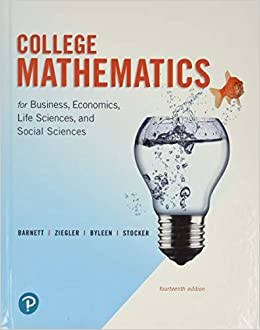Question
1) Suppose that you buy a house for $100,000 in year 1, and you pay cash (no mortgage). In year 2, you live in the
1) Suppose that you buy a house for $100,000 in year 1, and you pay cash (no mortgage). In year 2, you live in the house, although you could have rented it for $5,000. At the end of year 2, you sell the house for $120,000. Assume that you face a 25% marginal tax on income.
(a) Under a genuine income tax, how do these transactions change your Haig-Simons income in each period? How do they change your tax payments? Show your work.
(b) Under the U.S. income tax, how do these transactions change your taxable income in each period? (Use the treatment of capital gains described in footnote 3 of Chapter 18 of Rosen, although this treatment actually requires that you own and live in the house for at least two years.) How do they change your tax payments? Show your work.
For the next two questions, assume that you obtain an $80,000 mortgage in year 1. At the end of year 2 (when you sell your house), you pay the bank the $80,000 that you borrowed, plus $4,000 in interest payments. You still face a 25% marginal tax rate.
(c) Under a genuine income tax, how does obtaining the mortgage and repaying the principal and interest affect your Haig-Simons income in each period? How do your tax payments change in each period? Show your work. (Note: This question is asking only about the mortgage; do not include the tax effects of buying and selling the house.)
(d) Under the U.S. income tax, how does obtaining the mortgage and repaying the principal and interest affect your taxable income in each period? How do your tax payments change in each period? Show your work.
For the remaining question, calculate the combined effects of the house and mortgage on your tax payments. As before, you buy the house for $100,000 in year 1, using $20,000 of savings and an $80,000 mortgage. In year 2, you live in the house, although you could have rented it for $5,000, and you sell the house at the end of the year for $120,000, paying back the $80,000 principal and $4,000 interest. You face a 25% marginal tax rate.
(e) Under a genuine income tax, how does the house and mortgage affect your tax payments in each period? Show your work, using your previous calculations.
(f) Under the U.S. income tax, how does the house and mortgage affect your tax payments in each period? Show your work, using your previous calculations.
2)
(A) Consider the following example: you buy stock for $5,000 in year 1 and sell it for $10,000 in year 2. (There are no dividends.) The inflation rate is 10% and you are in the 15% tax bracket for capital gains income. What are your tax payments on the capital gains in year 2 under the U.S. tax system, and what are these payments under a genuine income tax, where taxable income is Haig-Simons income, which equals consumption plus the real change in wealth? (Assume that Haig-Simons income is also taxed at the 15 percent rate.) Use the method described in class for calculating real capital gains, and show your work.
(B) You buy a corporate bond for 100 dollars, which pays back 110 dollars next year, with the extra 10 dollars representing a 10 percent interest rate. The inflation rate is 5 percent. You face a 20 percent marginal tax rate. Under the U.S. income tax, how much do your tax payments rise next year? Under a genuine income tax, how much do your tax payments rise next year?
3) Consideraneconomywiththreetypesofindividuals:high,middle,andlowincome.Assumethattheyfacemarginaltaxratesequalto30%,20%,and10%,respectively.Alsoassumethat:
(I)Only the high and middle income individuals purchase tax exempt state and local bonds.
(II)Taxablebondspaya10%interestratebeforetaxes.
(a)Whatistheequilibriuminterestrateonstateandlocalbonds?Explain.
(b)Whichtaxpayers,ifany,wouldbehurtbytheeliminationofthetaxexemptiononstateandlocalbonds?Explain.
4)True or False? Explain
a) Studies show that low-income individuals in the U.S. face little or no burden from federal taxes. In fact, some low-income groups face negative taxes!
b) An individual who buys municipal bonds bears no tax burden of the tax on interest income from corporate bonds.
c) Employer-provided health insurance is effectively subsidized by the U.S. personal income tax.
d) If two people get married, then they always pay a marriage tax in the form of a higher combined tax burden, assuming they continue to earn the same income after they were married. If there is an exception to this claim, then describe it. If true, why?
e) The original purpose of the Alternative Minimum Tax was to catch high-income individuals who were sheltering most or all of the incomes from taxation, but actually increasing numbers of middle-income taxpayers are paying this tax.
Step by Step Solution
There are 3 Steps involved in it
Step: 1

Get Instant Access to Expert-Tailored Solutions
See step-by-step solutions with expert insights and AI powered tools for academic success
Step: 2

Step: 3

Ace Your Homework with AI
Get the answers you need in no time with our AI-driven, step-by-step assistance
Get Started


